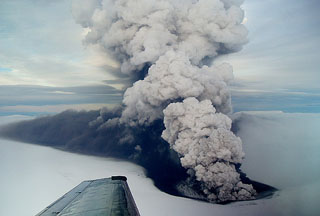Report on Grimsvotn (Iceland) — 23 September-29 September 2020
Smithsonian Institution / US Geological Survey
Weekly Volcanic Activity Report, 23 September-29 September 2020
Managing Editor: Sally Sennert.
Please cite this report as:
Global Volcanism Program, 2020. Report on Grimsvotn (Iceland) (Sennert, S, ed.). Weekly Volcanic Activity Report, 23 September-29 September 2020. Smithsonian Institution and US Geological Survey.
Grimsvotn
Iceland
64.416°N, 17.316°W; summit elev. 1719 m
All times are local (unless otherwise noted)
The Icelandic Meteorological Office raised the Aviation Color Code for Grímsvötn to Yellow on 30 September, noting that activity had been increasing over time and was above background levels. The report stated that seismicity increased over the past month, cauldrons had deepened in several places around the caldera signifying increased geothermal activity, surface deformation surpassed the level prior to the 2011 eruption, and magmatic gases were present in emissions over the summer. Additionally, water levels in the subglacial lake were comparable to levels prior to floods in 2004 and 2010.
Geological Summary. Grímsvötn, Iceland's most frequently active volcano in recent history, lies largely beneath the vast Vatnajökull icecap. The caldera lake is covered by a 200-m-thick ice shelf, and only the southern rim of the 6 x 8 km caldera is exposed. The geothermal area in the caldera causes frequent jökulhlaups (glacier outburst floods) when melting raises the water level high enough to lift its ice dam. Long NE-SW-trending fissure systems extend from the central volcano. The most prominent of these is the noted Laki (Skaftar) fissure, which extends to the SW and produced the world's largest known historical lava flow in 1783. The 15 km3 basaltic Laki lavas were erupted over 7 months from a 27-km-long fissure system. Extensive crop damage and livestock losses caused a severe famine that resulted in the loss of one-fifth of the population of Iceland.

